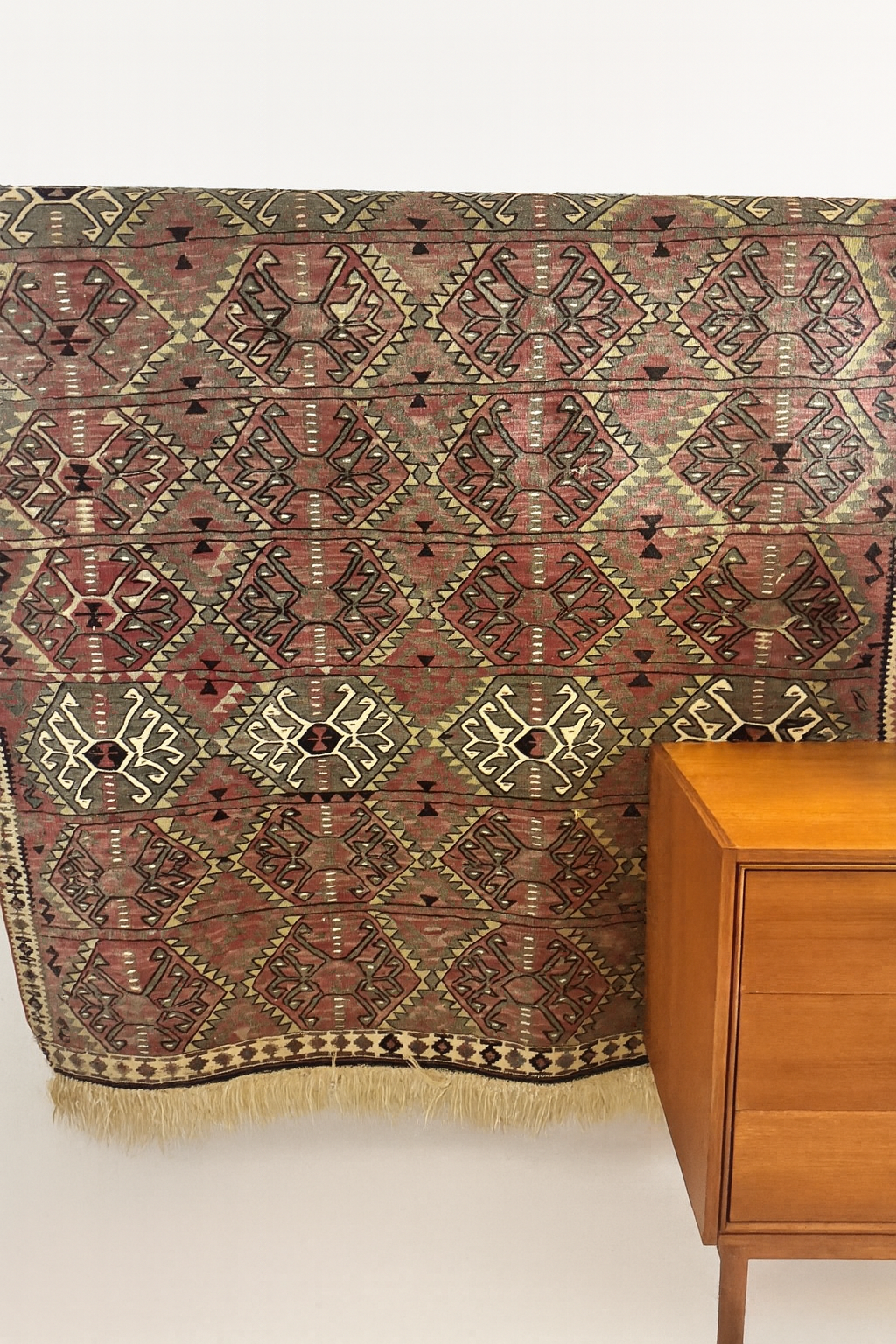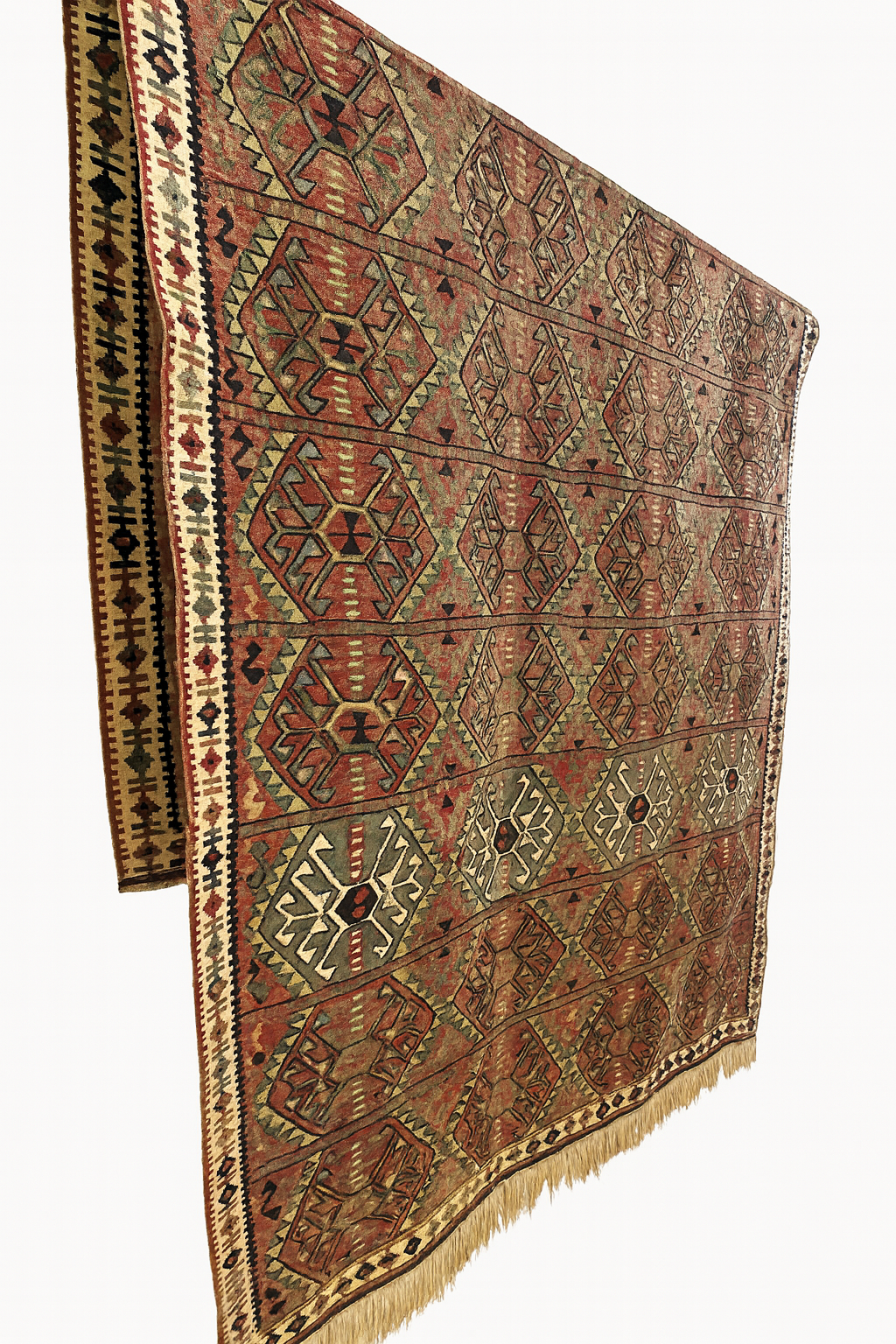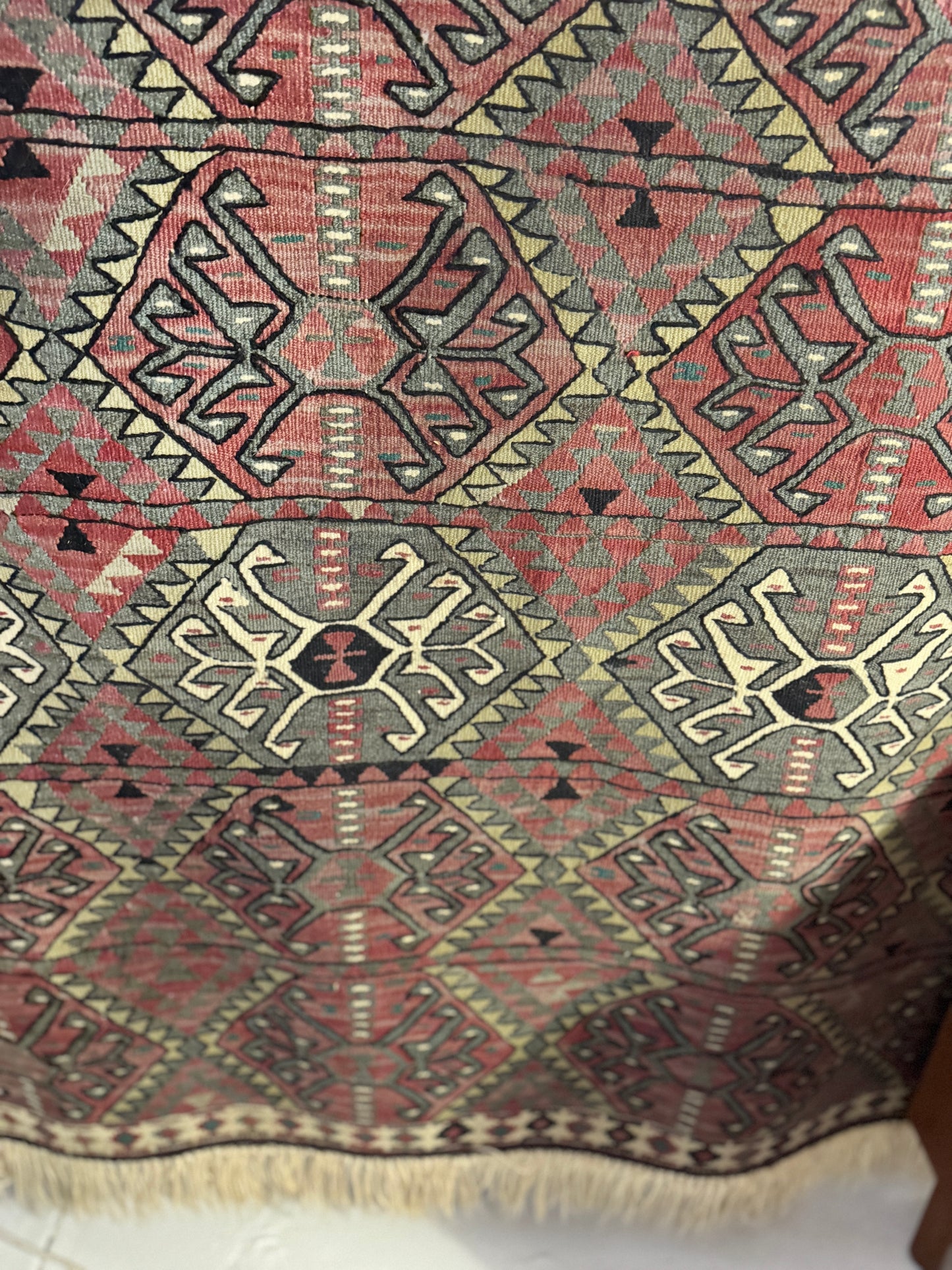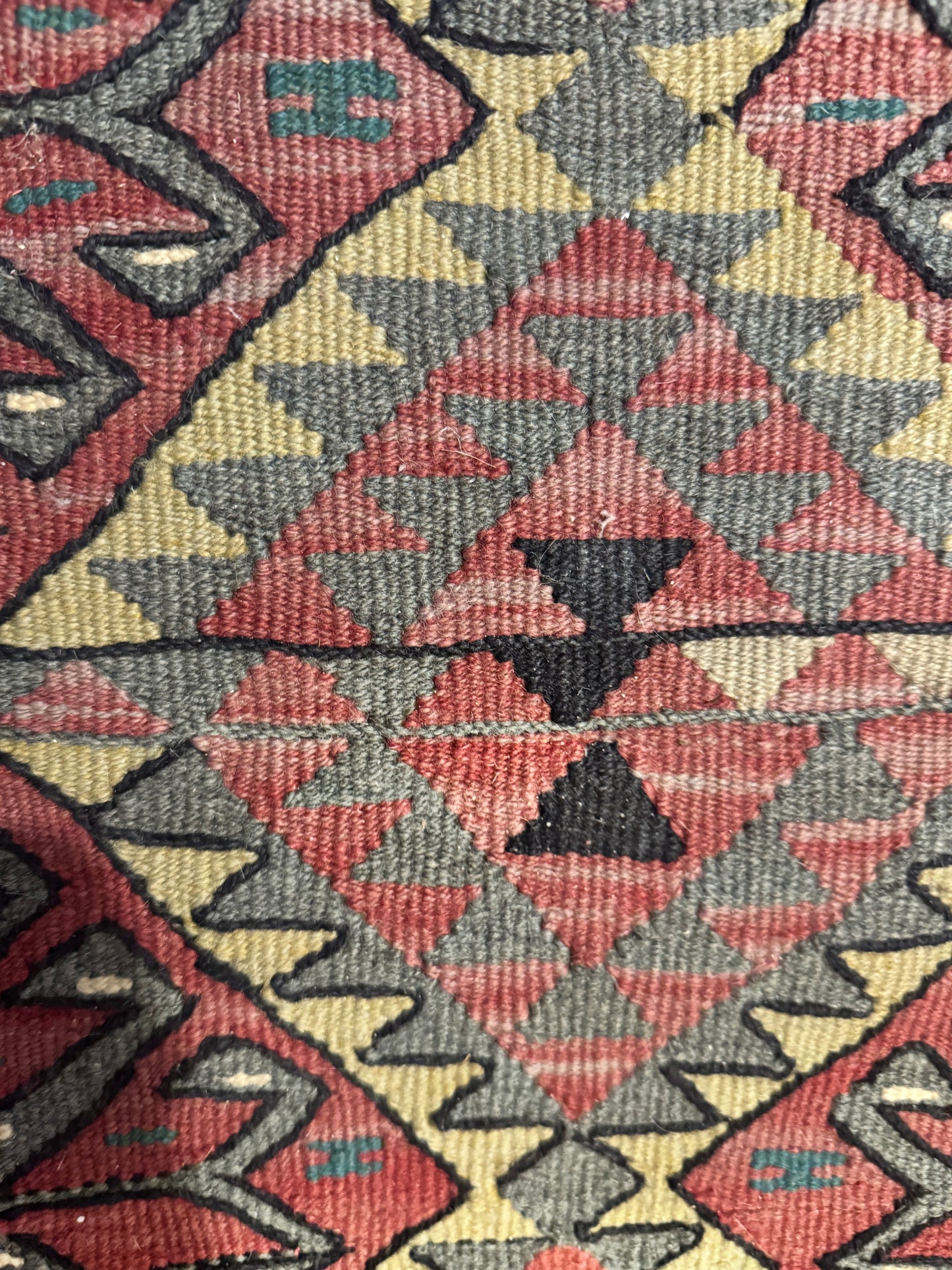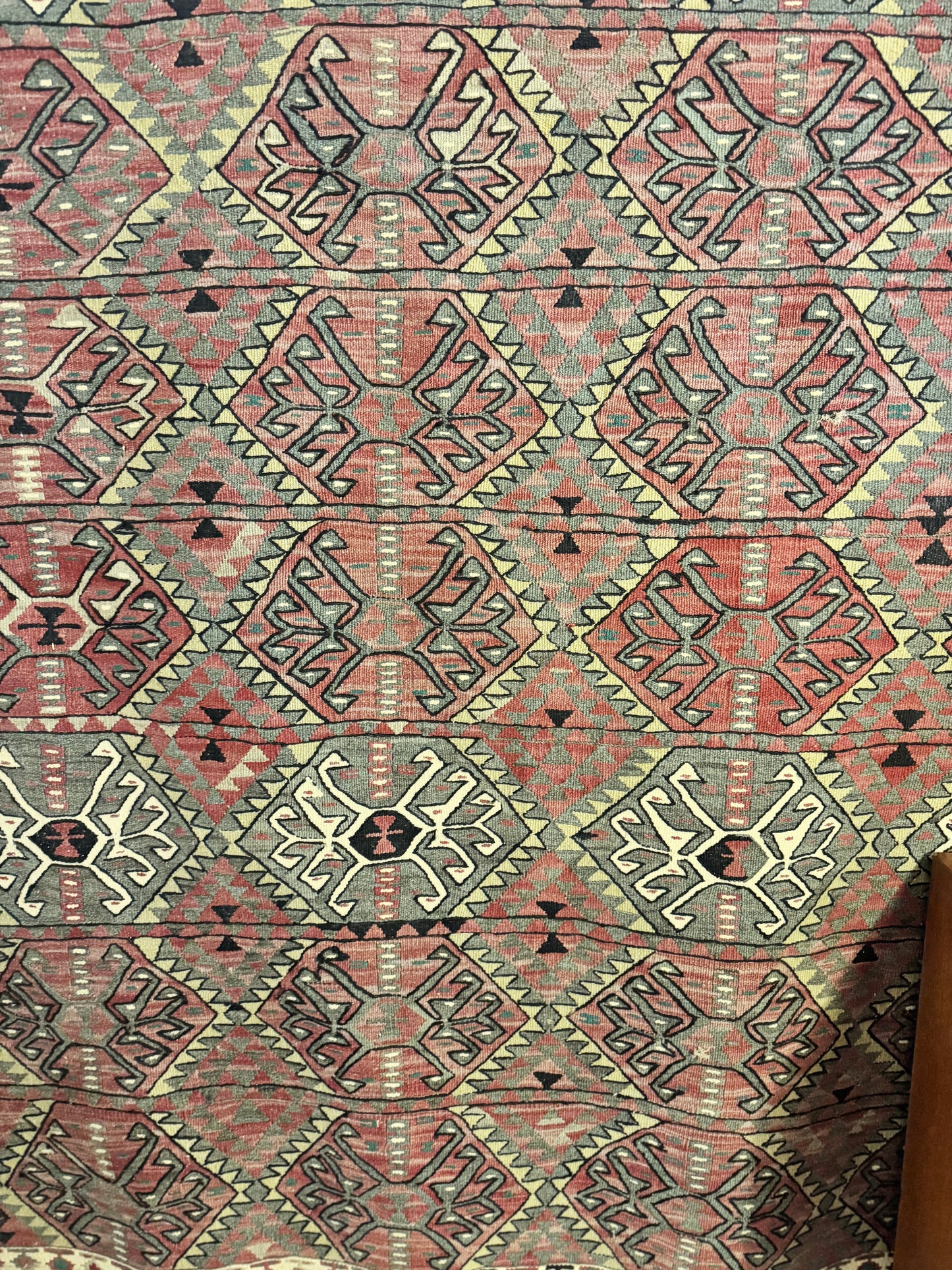Two girls and a container
Handwoven Kilim Rug – Double-Sided, 1940-1950
Handwoven Kilim Rug – Double-Sided, 1940-1950
Couldn't load pickup availability
This striking handwoven kilim rug is a beautiful example of traditional flatweave craftsmanship, likely produced in Central Asia or the Caucasus during the mid-20th century (c.1940-1950). Kilims of this type were woven on horizontal looms using the slit-weave technique, producing bold geometric designs with sharp edges and reversible usability.
The repeating hexagonal medallions filled with angular motifs are characteristic of tribal weaving traditions, where such symbols often represented fertility, protection, or regional identity. The rug’s double-sided nature adds versatility: one side retains strong colour saturation, while the other shows noticeable fading from light exposure, giving it a softer, more muted aesthetic.
Dyes & Materials
- Woven in hand-spun wool on a wool foundation
- Natural vegetable dyes producing earthy reds, deep greens, ivory, and black outlines
- The fading on one side suggests long-term sunlight exposure
Age & Origin
- Handwoven, mid-20th century (approx. 1940-1950)
- Most likely Caucasian or Anatolian in origin, consistent with the design language and colour palette
Dimensions
1.56 x 2.35
Condition
- Structurally sound with strong weaving
- One side presents rich, unfaded colours
- The reverse side shows fading, which may appeal to those preferring a gentler, time-worn palette
✨ Designs for Future Generations
Shipping available Australia-wide.
Private viewings in Wahroonga by appointment.
Share
